|
January 19, 2003
Winter Tree ID & Tracking
(Photos and report by Walter
Muma) |
|
|
|
Nine people participated in a cold day of winter tree and shrub
identification in the Royal Botanical Gardens (RBG) Arboretum section in
Burlington, along the north shore of Cootes Paradise. We also examined any
tracks that came across our path. A warm welcome to newcomers Dean &
Fleur-Ange, Craig & Cathleen, Dieter & Katie!
|
|
|
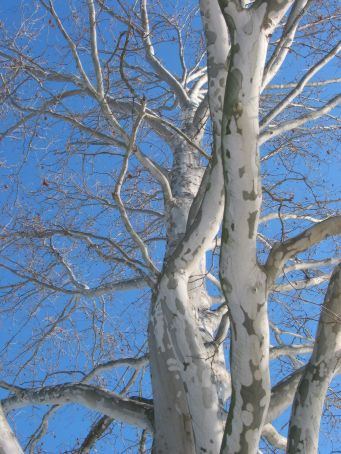 |
Sycamore trees have beautiful flaky bark.
It was bright and sunny for most of the day, which helped
to warm us in the brisk wind.
We identified more than 40 trees & shrubs; only a few
are pictured here.
This being an arboretum, many trees were labeled, thus
greatly aiding us in our study.
|
|
|
|
|
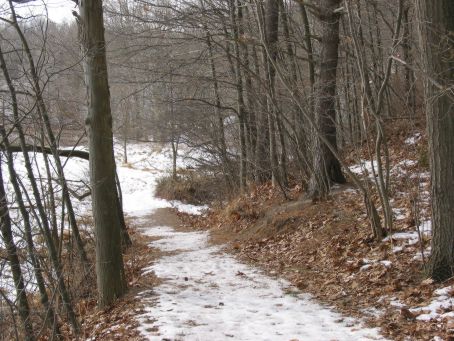
|
Although this area is an "arboretum", it is
nevertheless mostly wild.
|
|
|
|
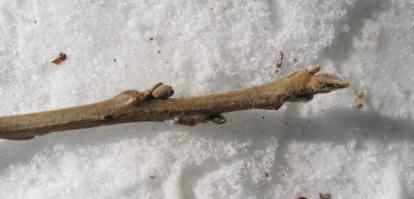 |
This twig is from a tree that we had quite a debate
over. At first some of us thought it was a black walnut, and there
was quite a pile of black walnut shells around its base. Of course,
that doesn't mean the tree is a black walnut! But the bark wasn't
quite right, which led others to feel that it was black oak, or
something else. We spent quite a bit of time on this tree. However,
later research proved it to be a black walnut after
all.
|
|
|
|
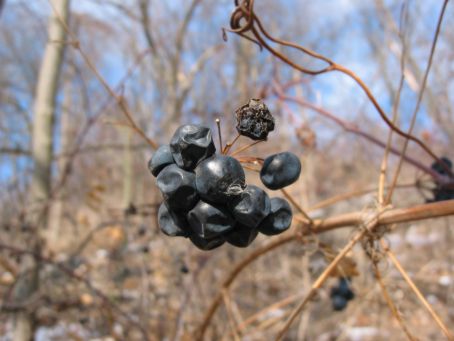 |
We also worked at identifying any wildflowers or
remnants thereof that we encountered along the way. Thanks to Dean
who shared his extensive wildflower experience with us!
Here are berries of the carrion flower, so named because its
flowers smell of carrion!
|
|
|
|
|
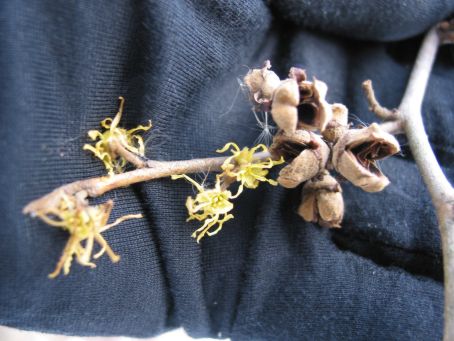
|
Believe it or not, there were actually some flowers in bloom!!
These are witch hazel flowers (a shrub). They are not usually
out this late in the season -- the flowers open in late fall, usually
after the leaves have fallen.
To the right of the flowers are open seed cases. Witch hazel expels
its seeds great distances when these seed cases spring open.
|
|
|
|
|

|
Part of the group in discussion.
|
|
|
|
|
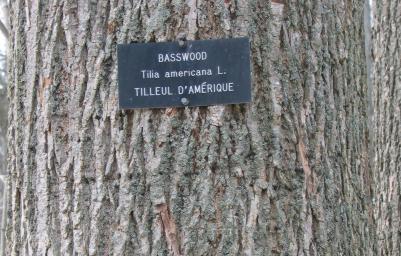
|
Basswood, helpfully identified for us by the RBG.
Note the characteristic sapsucker-like holes in the bark.
These are not caused by a sapsucker in this case -- basswood develops
these as it ages.
|
|
|
|
|
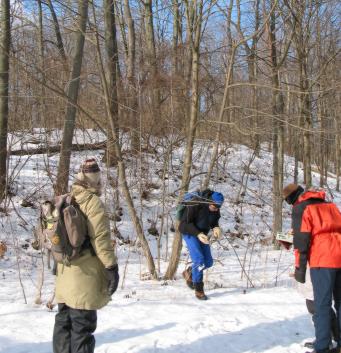 |
A pawpaw tree! A Carolinian forest zone species, very rare this
far north (it's the small tree in the center of the photo).
|
|
|
|
|
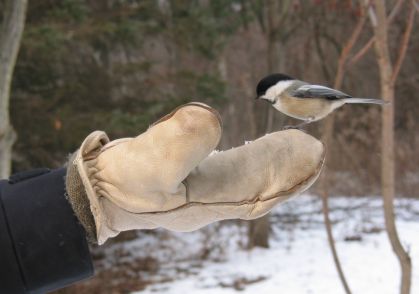
|
The chickadees are very friendly here.
|
|
|
|
|
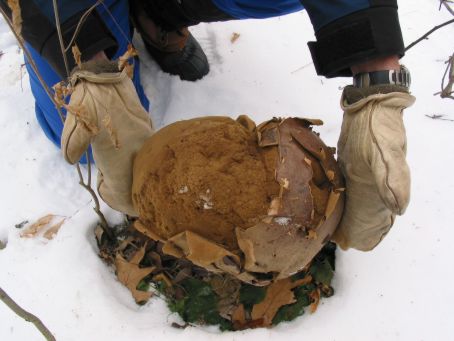 |
The remains of a giant puffball, well past the edible stage!
|
|
|
|
|
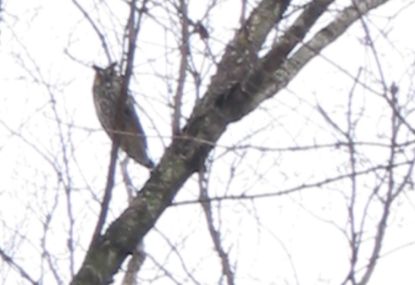
|
One highlight of the day was the sighting of a long-eared
owl, sitting high up in a tree!
Good spotting, Craig!
|
|
|
|
|
All participants said they had a great day of learning and
discovery. Thanks to everyone who came out! For
more info on winter tree & shrub identification, please visit the
Ontario Trees website |
|
|
| |